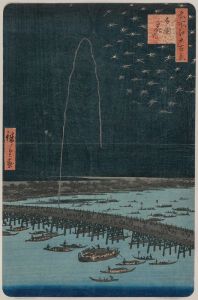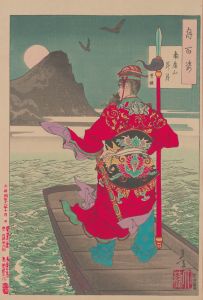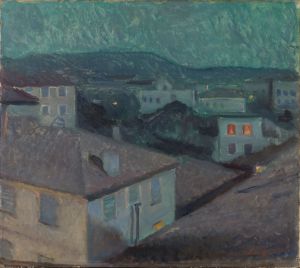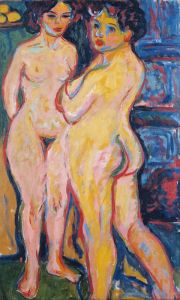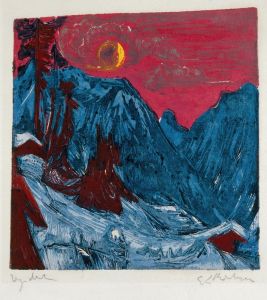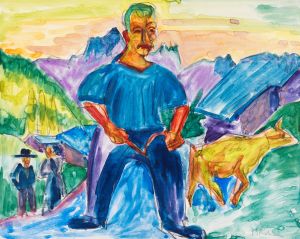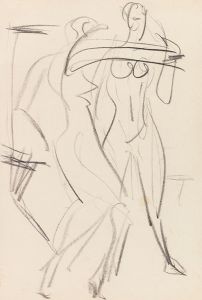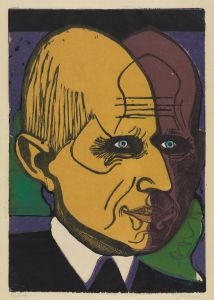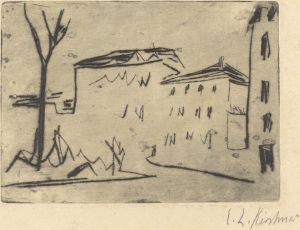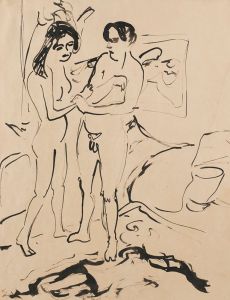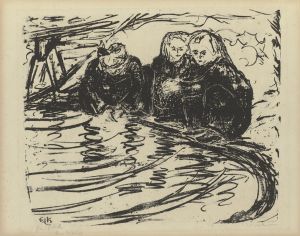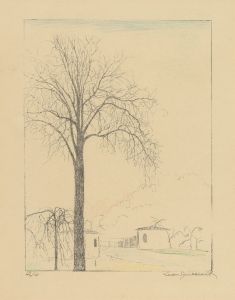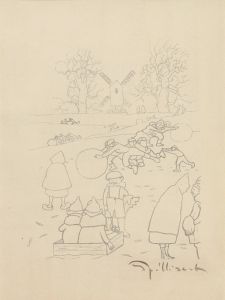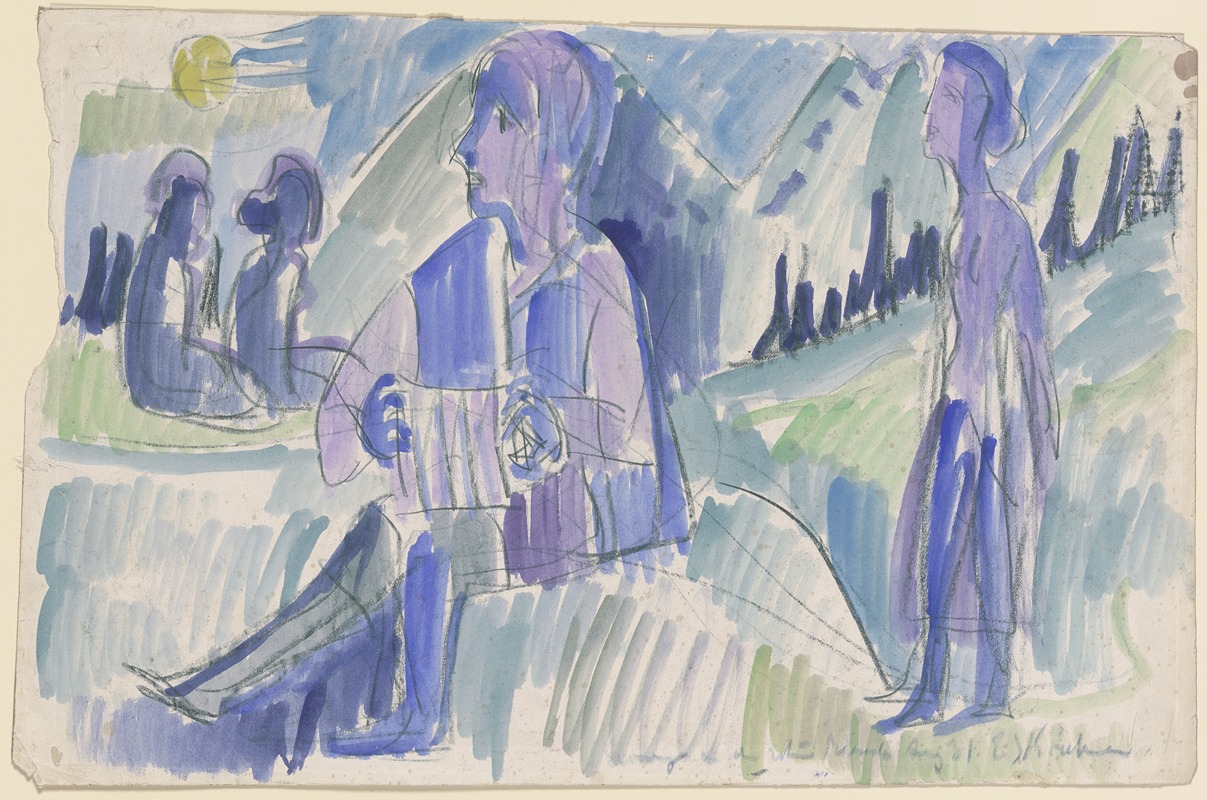
Handorgler in einer Mondnacht
A hand-painted replica of Ernst Ludwig Kirchner’s masterpiece Handorgler in einer Mondnacht, meticulously crafted by professional artists to capture the true essence of the original. Each piece is created with museum-quality canvas and rare mineral pigments, carefully painted by experienced artists with delicate brushstrokes and rich, layered colors to perfectly recreate the texture of the original artwork. Unlike machine-printed reproductions, this hand-painted version brings the painting to life, infused with the artist’s emotions and skill in every stroke. Whether for personal collection or home decoration, it instantly elevates the artistic atmosphere of any space.
"Handorgler in einer Mondnacht" (Accordion Player in a Moonlit Night) is a painting by the German expressionist artist Ernst Ludwig Kirchner. Kirchner, a founding member of the influential art group Die Brücke (The Bridge), was a pivotal figure in the development of early 20th-century expressionism. His work is characterized by bold colors, dynamic compositions, and a focus on the emotional and psychological aspects of his subjects.
Kirchner was born in Aschaffenburg, Bavaria, in 1880 and studied architecture in Dresden before fully committing to painting. In 1905, he co-founded Die Brücke with fellow artists Fritz Bleyl, Erich Heckel, and Karl Schmidt-Rottluff. The group sought to create a new artistic language that bridged the past with the future, emphasizing raw emotion and a break from traditional academic art forms.
"Handorgler in einer Mondnacht" exemplifies Kirchner's expressionist style, capturing the essence of a nocturnal scene with an accordion player as its central figure. The painting likely features Kirchner's signature use of vivid colors and bold brushstrokes, which convey a sense of movement and emotional intensity. The moonlit setting adds a layer of mystery and atmosphere, a common theme in Kirchner's work as he often explored the interplay between urban life and natural elements.
Throughout his career, Kirchner was deeply influenced by the vibrant life of cities, particularly Berlin, where he moved in 1911. The bustling urban environment provided endless inspiration for his art, and he frequently depicted scenes of nightlife, cabarets, and street performers. The accordion player in this painting may reflect Kirchner's fascination with the bohemian lifestyle and the diverse characters he encountered in the city.
Kirchner's work was also shaped by his interest in non-Western art forms, particularly African and Oceanic art, which he encountered through ethnographic museums and collections. This influence is evident in his use of simplified forms and expressive lines, which can be seen in the stylized depiction of figures and landscapes in his paintings.
The outbreak of World War I had a profound impact on Kirchner's life and work. He volunteered for military service but was discharged due to health issues, including a nervous breakdown. This period marked a turning point in his art, as he began to explore darker themes and more introspective subjects. Despite these challenges, Kirchner continued to produce significant works throughout his career.
In the 1930s, Kirchner's art was labeled "degenerate" by the Nazi regime, and many of his works were removed from German museums. This rejection deeply affected him, and he spent his later years in Switzerland, where he continued to paint until his death in 1938.
"Handorgler in einer Mondnacht" remains an important example of Kirchner's contribution to expressionism and his ability to capture the emotional depth of his subjects. His innovative approach to color, form, and composition has left a lasting legacy in the art world, influencing generations of artists who followed.





